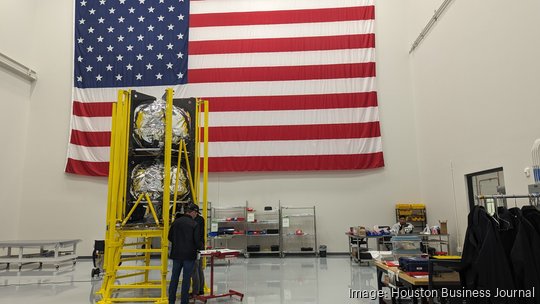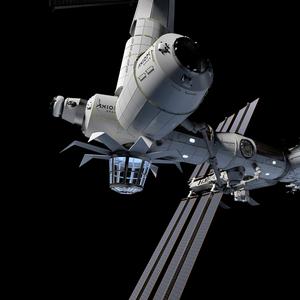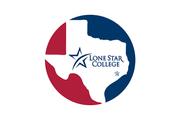
The Houston-based company that landed on the moon this year has confirmed that early 2025 will be the likely time frame for an attempted encore.
Intuitive Machines Inc. (Nasdaq: LUNR) will be evaluating a launch window of December 2024 to January 2025 for IM-2, the company’s second planned moon mission, CEO Stephen Altemus said during the company's second-quarter earnings call.
“I want to stress that the importance isn’t the actual launch day, it’s that this season of launching to the south pole is of the utmost importance,” Altemus said. “NASA’s Europa mission will take upcoming priority over the launch pad [at the end of 2024], so we chose to focus on the December-January time frame for our attempts.”
Altemus noted that conflicting missions and weather conditions had pushed Intuitive Machines’ historic launch back several times earlier this year before blasting off on Feb. 15 and touching down on the moon’s surface on Feb. 22.
IM-2 will carry Athena, or “Attie,” to the south pole of the moon to mine for water ice. The spacecraft is being built at the company's $40 million Lunar Production and Operations Center at the Houston Spaceport. The long-term vision for Intuitive Machines includes potential mining on asteroids and the surface of Mars.
An Intuitive Machines spokesperson confirmed that IM-2 is completely sold out in terms of payloads. The primary payload is a drill developed by NASA known as The Regolith Ice Drill for Exploring New Terrain, or TRIDENT, along with an Intuitive Machines-developed hopper robot known as Micro-Nova.
Additionally, Nokia Bell Labs is deploying what it claims is the first moon-based cellular network onboard IM-2. Nokia said last year the network could be used to transmit images from the moon’s surface or for future astronauts to use as part of connectivity.
Intuitive Machines has also continued to tap local companies for its payloads. Aegis Aerospace, a Houston-based company, signed an agreement with Intuitive Machines in 2022 to deliver Space Science & Technology Evaluation Facility — First Flight, a general-purpose lunar testbed also called SSTEF-1, to the moon in 2025. An Intuitive Machines spokesperson told the Houston Business Journal that Aegis’ payload would not be on IM-2.
Meanwhile, last week Intuitive Machines announced another partnership with Houston-based Seops, a space mission services provider, for a future Intuitive Machines mission beyond the currently planned IM-3 mission.
Altemus said that IM-3, which is projected to land in the Reiner Gamma lunar swirl on the moon’s near side, is finalizing a landing date sometime in the fourth quarter of 2025 with initial targets for October or November of next year.
All of the current Intuitive Machines NASA payloads to date have been part of the agency’s $2.6 billion Commercial Lunar Payload Services program. In its most recent 10-Q quarterly report, Intuitive Machines described its current lunar payload contracts as "loss contracts," where variations in the price of the contract push the costs of completing it over the revenue the contract brings in.
Intuitive Machines posts Q2 loss, misses revenue estimate
For the second quarter of 2024, Intuitive Machines posted $41.4 million in revenue, missing the Zacks Consensus Estimate by 3.7%. While revenue grew year over year from Q2 2023, the company ended up posting a $28.1 million loss.
However, Intuitive Machines also beat analyst estimates for earnings per share, reporting 15 cents per share vs. a FactSet estimate of an 18 cent loss per share.
The company’s stock, which was trading at $3.63 when the market opened on Aug. 14, hit its highest-ever point of $10.99 per share on Feb. 20, two days before successfully touching down on the moon’s surface. Intuitive Machines went public in February 2023 by merging with a special purpose acquisition company.
During the earnings call, Altemus and CFO Steven Vontur confirmed that Intuitive Machines was one of the companies that submitted an expression of interest for NASA’s Volatiles Investigating Polar Exploration Rover, or VIPER, which had its mission cancelled earlier this year. VIPER is fully built but untested, and after seeking expression of interest last month, NASA is now asking for proposals for a lunar landing using the technology.
A NASA spokesperson told the HBJ that over a dozen companies had submitted expressions of interest in VIPER by the deadline of Aug. 1.
“The improved economics of our heavy cargo class lander, coupled with our demonstrated capabilities, enables Intuitive Machines the unique opportunity to offer to fly VIPER as a commercial mission,” Altemus said.
Altemus added that Intuitive Machines is developing Nova-D, a new class of lunar lander with a 1,500-kilogram payload. If VIPER takes up 500 kilograms, the company can still offer 1000 kg for other NASA or commercial payloads.
Sign up here for the Houston Business Journal’s free morning and afternoon daily newsletters to receive the latest business news impacting greater Houston.





